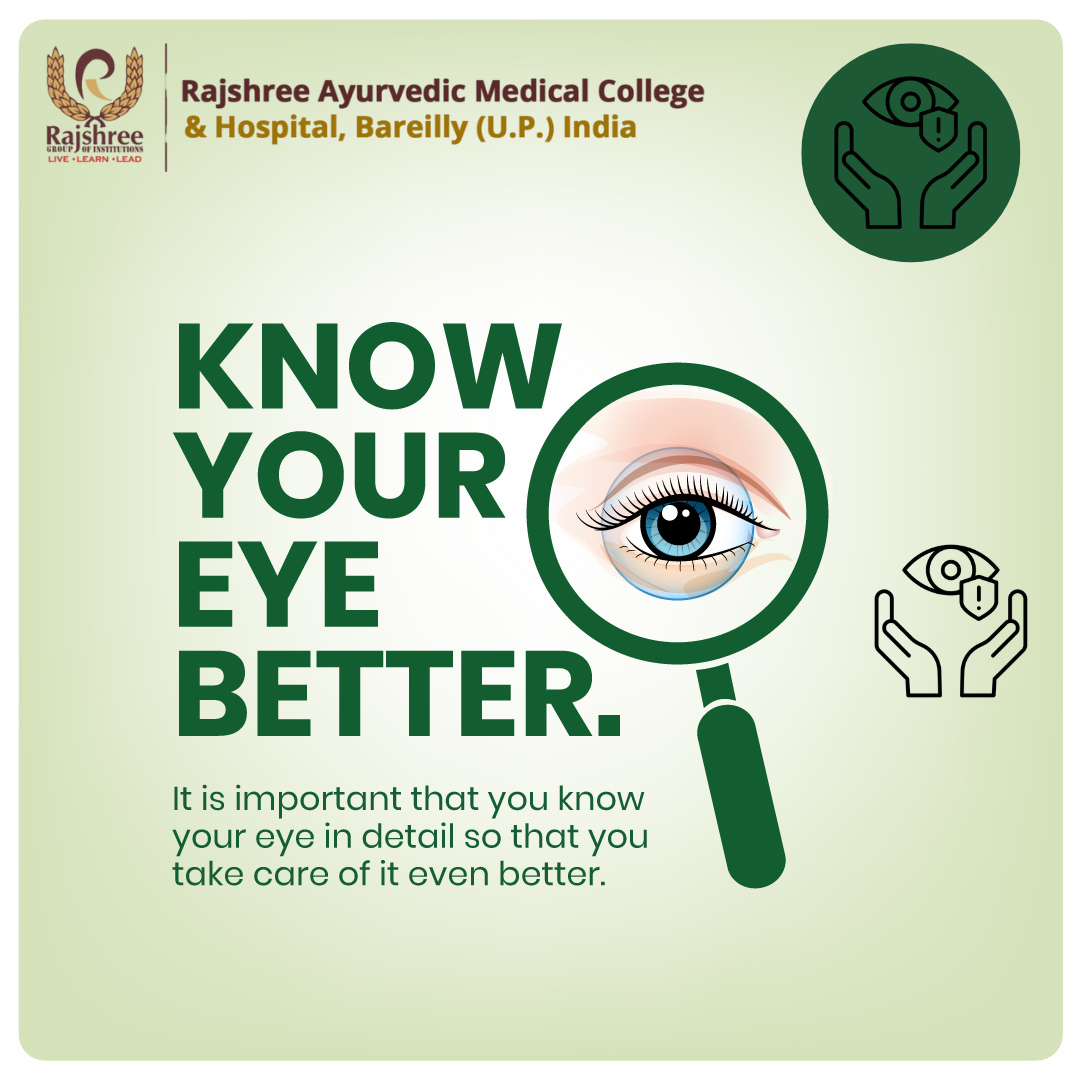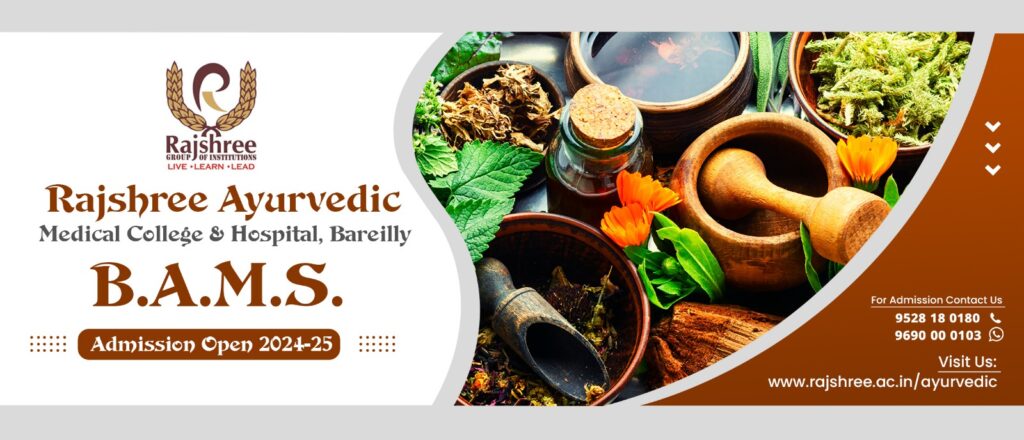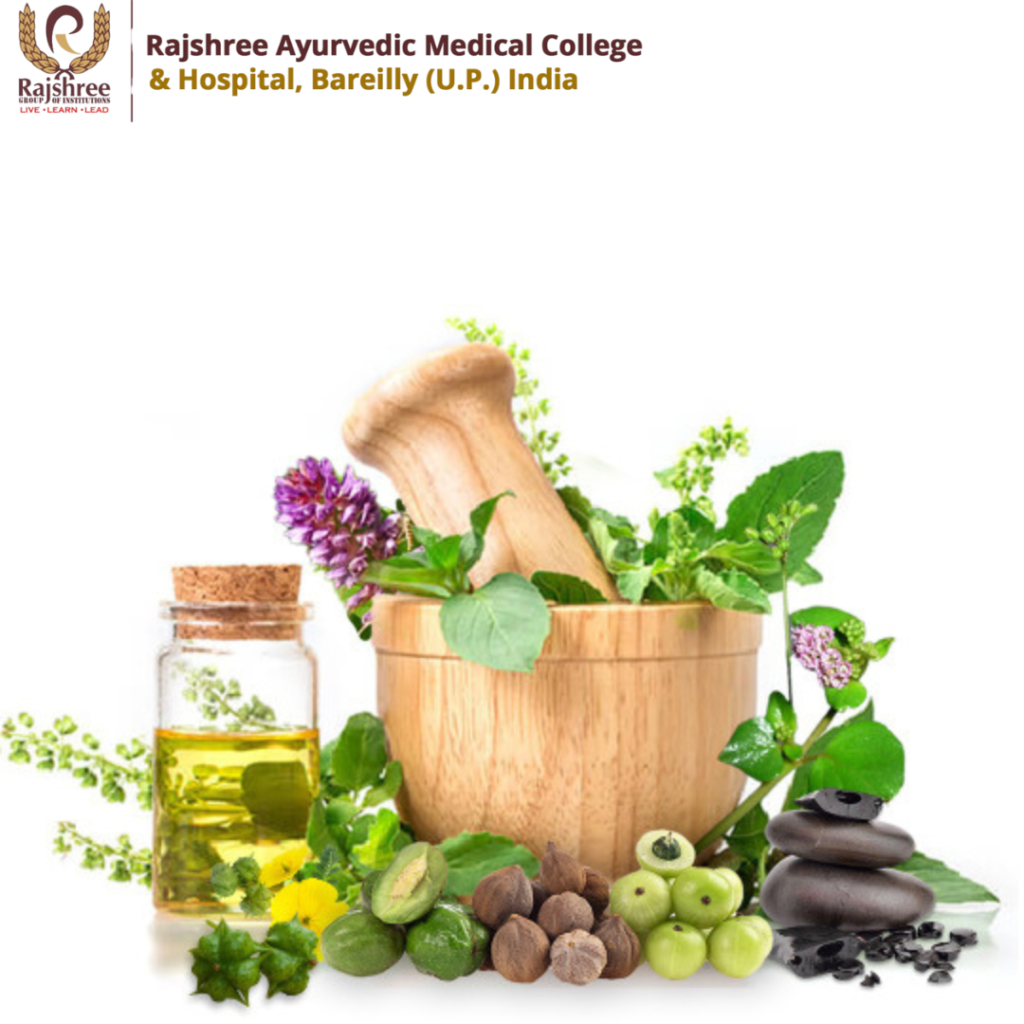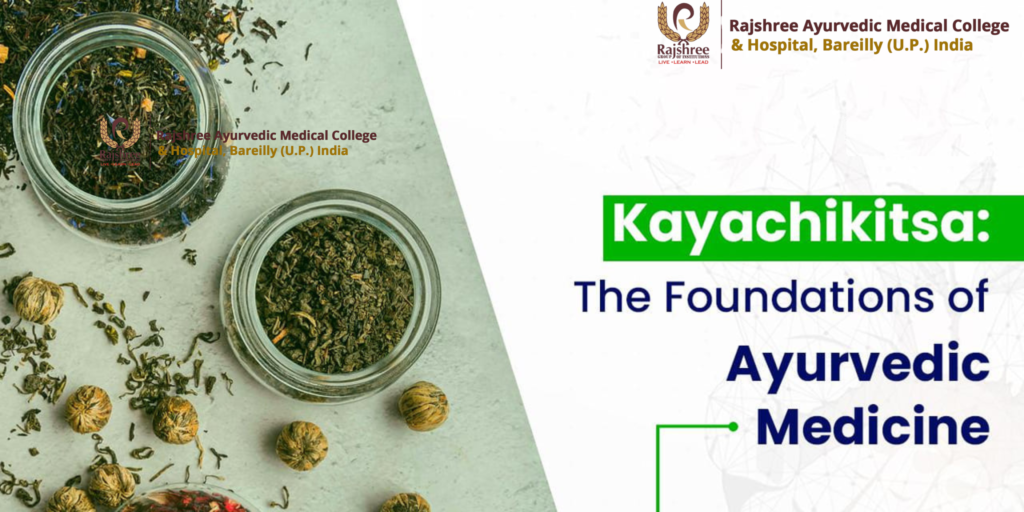All the Information You Require to Understand Ayurvedic Eye Care
Have you ever felt like your eyes are screaming for a break after a long day and squinted at your computer screen? With the advent of the digital age, eye strain and other eye problems have become commonplace. One glimmer of hope, though, is Ayurveda. There are timeless lessons to be learnt from this age-old Indian medical system for caring for your soul’s windows. Let’s explore how Ayurveda can assist you in maintaining the health of your eyes, with professional advice from Rajshree Ayurvedic Medical College & Hospital in Bareilly, Uttar Pradesh, India. Known for its ayurvedic treatments, it is a private ayurveda college in Uttar Pradesh.
Understanding Ayurveda:
Ayurveda is a comprehensive approach to health that has been practiced for over 5,000 years. The name is Sanskrit and means “to live life and cure any ailments using nature’s produce.” In contrast to contemporary medicine, which frequently concentrates on symptom treatment, Ayurveda seeks to restore harmony to the body, mind, and soul. The key is harmony. If your body is like a symphony, Ayurveda makes sure all the instruments are tuned just right. The creative methods used by Ayurvedic Medical Colleges in Uttar Pradesh to teach and apply Ayurveda in daily life are noteworthy.
The Relationship Between Ocular Health and Ayurveda
According to Ayurveda, your eyes are more than just organs; they are the doorway to your inner self. Having 20/20 vision is not the only indicator of good eyesight and healthy eyes; keeping your body’s dosha balance is also important. The three doshas of Vata, Pitta, and Kapha are important for maintaining eye health, and imbalances in these doshas can cause a variety of eye disorders.
Typical Ocular Issues and Ayurvedic Views:
Ayurveda offers special insights into common ocular conditions, treating the underlying causes as well as the symptoms. Let’s see how Ayurvedic College in Uttar Pradesh handles its patients and how it approaches and handles a few common eye conditions.
Dry Eyes:
It can be extremely irritating to have dry eyes, similar to having a sand particle in your eye all day. According to Ayurveda, vata dosha imbalances govern dry eyes and movement in the body. To calm Vata, treatments frequently involve dietary changes and calming oils.
Conjunctivitis:
Conjunctivitis, often referred to as “Abhishyanda” in Ayurveda, is an inflammation of the conjunctiva of the eye. Here, Pitta dosha, which is connected to heat and inflammation, is frequently at fault. Cooling remedies, such as using triphala water to wash the eyes, can help lessen the pain and redness.
Glaucoma:
This disorder can cause visual loss and is characterised by elevated intraocular pressure. According to Ayurveda, it is a Pitta and Kapha-related problem involving all three doshas. The main goals of treatment are natural ocular pressure management and detoxification.

Ayurvedic Doshas and Eye Health:
Applying Ayurvedic principles effectively requires an understanding of how the three doshas affect your eyes. Every dosha has a unique influence and when it is out of balance, can show up as many kinds of eye problems.
Vata Dosha:
Vata is the element of movement, aridity, and coolness. You may notice twitching of the eyes, dry eyes, or even blurred vision when Vata is out of balance. In order to balance Vata, Ayurvedic treatments emphasise warming and replenishing the body.
Pitta Dosha:
Pitta is all about heat and metabolism. Excess Pitta can lead to inflammation and burning sensations in the eyes, often seen in conditions like conjunctivitis or red, itchy eyes. Cooling therapies are commonly recommended to cure these conditions.
Kapha Dosha:
Kapha is associated with lubrication and structure. A Kapha imbalance can result in cataracts, eye infections, or watery eyes. The goal of treatment is to balance the body by stimulating and clearing the Kapha.
Ayurvedic Treatments for Eye Care:
Numerous therapies are available in Ayurveda that are especially meant to nourish and repair the eyes. Let’s examine a few of these age-old methods that can provide solace and improve eye health.
Netra Tarpana:
In a novel Ayurvedic procedure known as “Netra Tarpana,” medicinal ghee is applied to the eyelids to coat them in nutrients. For those with dry eyes or eye strain, this therapy is especially helpful as it strengthens the muscles in the eyes and improves eyesight.
Netra Dhara:
This is applying a steady stream of herbal concoctions to the eyes. It facilitates eye cooling, lessens eye strain, and enhances clarity of vision. It works very well to reduce inflammation and redness in the eyes, which are Pitta-related diseases.
Triphala:
Ayurvedic powerhouse triphala is well-known for its restorative qualities. These fruits are included in it: Amalaki, Bibhitaki, and Haritaki. A common ingredient in Ayurvedic eye care, triphala is used both topically and internally to help cleanse and rejuvenate the eyes.
Herbal Remedies:
Ayurveda uses a variety of herbs, including bilberry, ginkgo biloba, and saffron, for their positive effects on eye health. These herbs shield the eyes from oxidative stress, increase circulation, and decrease inflammation.

Diet and Lifestyle Tips for Eye Health:
Making conscious decisions throughout your daily life is just as important to maintaining eye health as receiving the right therapies. Here are some dietary and lifestyle tips to help you maintain eye health.
Dietary Recommendations:
Consuming a well-balanced diet high in antioxidants is a crucial component. Add items such as carrots, almonds, seeds, and leafy greens. These are nutrient-dense and full of vitamins A, C, and E, which are vital for healthy eyesight and defence against age-related eye problems.
Daily Routine Tips:
Incorporate routines such as getting enough sleep, taking regular breaks from screens, and engaging in eye exercises to create an eye-friendly daily schedule. To hydrate and calm your eyes throughout the day, Ayurveda also suggests bathing them with cool, fresh water.
Eating Right: Ayurvedic Diet for Eye Health:
Foods to Include:
Eating foods high in zinc, omega-3 fatty acids, and vitamins A, C, and E can help maintain eye health. According to Ayurveda, ghee, leafy greens, carrots, and almonds are excellent sources of nutrition for the eyes.
Foods to Avoid:
Eat less spicy, salty, and acidic meals as they upset the Pitta dosha and cause redness and irritation in the eyes.
Exploring Popular Ayurvedic Eye Treatments:
Netra Basti:
Netra Basti is similar to Netra Tarpana in that it involves rinsing the eyes with medicated oils or ghee, but it concentrates on cleansing and profound renewal. It works very well for fatigued and dry eyes.
Anjana:
It involves using herbal eye salves. By cleaning and nourishing the eyes, these preparations aid in the treatment of a variety of eye disorders, including conjunctivitis and eye strain.
Eye Drops and Oils:
To calm and treat the eyes, Ayurvedic eye drops are prepared from herbs like rose, amla, and honey. You can gently apply oils like castor and triphala oil around your eyes to help minimise puffiness and dark circles.
Rajshree Ayurvedic Medical College & Hospital in Bareilly, Uttar Pradesh, India
To provide complete eye care, Rajshree Ayurvedic Medical College & Hospital has combined age-old Ayurvedic methods with cutting-edge medical knowledge. Their method offers a synthesis of modern methods and old wisdom. This institute is a great place to start learning Ayurveda if you want to enrol and start your journey. Rajshree Ayurvedic Medical College & Hospital is one of the private BAMS colleges in Uttar Pradesh that offers the BAMS program at a reasonable cost, according to the list of colleges with tuition structures.
Innovative Treatments:
The Rajshree Ayurvedic Medical College & Hospital is renowned for its cutting-edge care, which includes customised Ayurvedic therapies that address each patient’s unique dosha imbalances. They guarantee a comprehensive approach to eye care by combining Ayurvedic remedies with contemporary diagnostic technologies.
Patient Success Stories:
Many patients who received treatment at Rajshree Ayurvedic Medical College & Hospital reported notable changes in their eye ailments. Their success stories demonstrate the efficacy of fusing traditional and modern eye care techniques, from treating chronic dry eyes to correcting early-stage cataracts.
Preventive Measures and Eye Care Tips:
It’s always preferable to prevent than to cure. Here are some useful hints for maintaining the health of your eyes and preventing typical issues.
Protecting Your Eyes Daily:
To protect your eyes from strain and injury, include easy habits like wearing sunglasses, minimising screen usage, and taking regular breaks.
Ayurvedic Tips for Screen Time:
Use the 20-20-20 rule to counteract the effects of excessive screen time: after 20 minutes, take a 20-second look at anything 20 feet away. Additionally, take into account utilising blue light filters or applying cooling eye solutions.
Integrating Ayurveda with Modern Eye Care:
Complementary Practices:
Ayurveda and contemporary therapies can complement one another to offer a more comprehensive approach to eye care. For better outcomes, traditional techniques can be used in conjunction with practices like yoga, herbal medicines, and dietary changes.
Finding a Balance:
Understanding your body’s needs and the type of your eye issue is essential to balancing Ayurvedic and modern eye care. To receive the best care possible, speak with both contemporary eye experts and Ayurvedic physicians.












